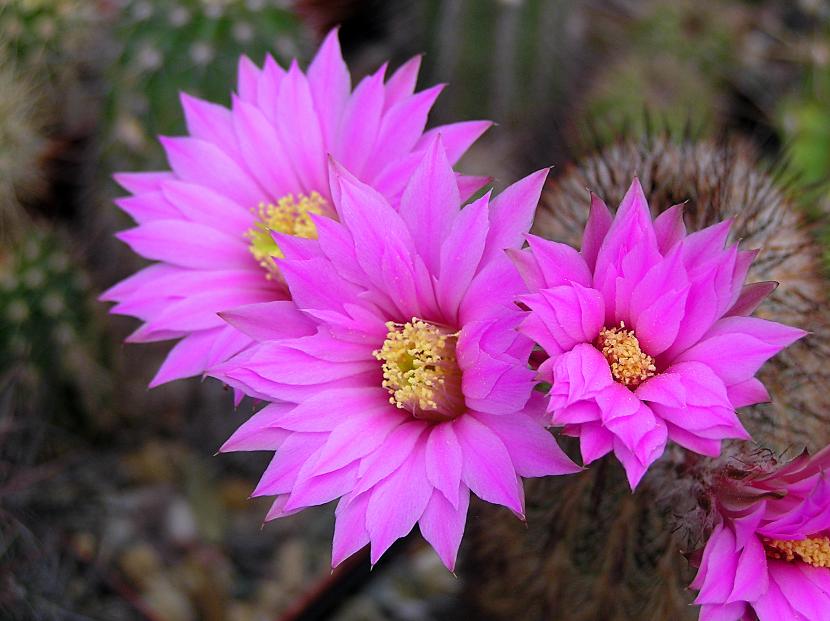
The cactus they are incredible plants. They are very easy to care for, and they also have very decorative flowers. As if this were not enough, they usually have a very low sale price, so it is not difficult for us to end up having an interesting collection in a short time.
But What are the characteristics of cacti? In this special article, you are going to discover the types that there are, the ones that resist the cold better, and if you still want to know more, keep reading because we are going to give you a series of tips so that you have great plants.
Origin and evolution of cacti
Our protagonists have a common origin: America, and more specifically Central America. They are believed to have appeared on Earth about 80 million years ago. At that time they had leaves, but as the climate became drier and warmer, they began little by little - in a matter of thousands of years - to 'turn' the leaves into thorns.
Although not many fossil remains from that time have arrived, we can get an idea of how their evolution was thanks to the botanical genus pereskia, the oldest of all. This succulent plant has leaves, areoles and a succulent stem which is where it has its water reserves.
How to differentiate cacti from other plants? Let's separate it.
Cactaceae Family
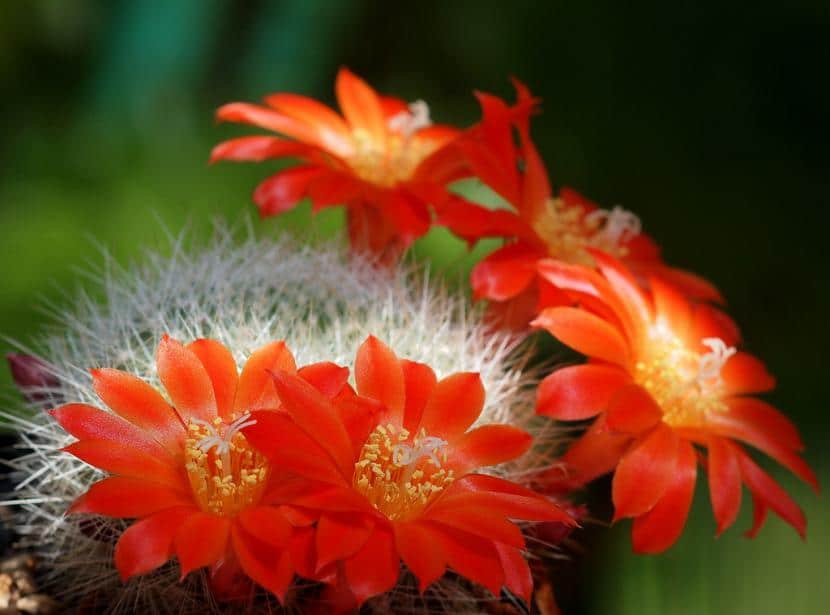
Cacti are succulent plants with or without thorns which belong to the Cactaceae family. Originally from America, nowadays they have managed to adapt to the climatic conditions of various parts of the globe.
It is quite extensive, as it has 200 genera, with about 2500 species. Although if they seem few, you should know that new crosses and cultivars are constantly appearing really amazing.
Cactaceous plants are characterized by the following:
- areola: it is the hallmark of these wonderful plants. You will find them in the ribs. From them arise the thorns -if it has them-, flowers, hairs and even leaves.
- Stem: also called 'body', it can be columnar (cylindrical stems that grow upwards), globose (with spherical bearing) or cladode (flattened stems).
- Cactus flower: they are undoubtedly the part of the cactus that attracts the most attention. They do not last as long as those of other plants, but despite this, they continue to attract new curious and lovers of cacti. They are solitary and hermaphroditic, which means that the flowers can self-pollinate on their own, since they have the female and male reproductive organs in them.
- Fruit: it is usually small, about 2-4cm in length. Inside they contain around 10 seeds, depending on the genus.
Cacti care
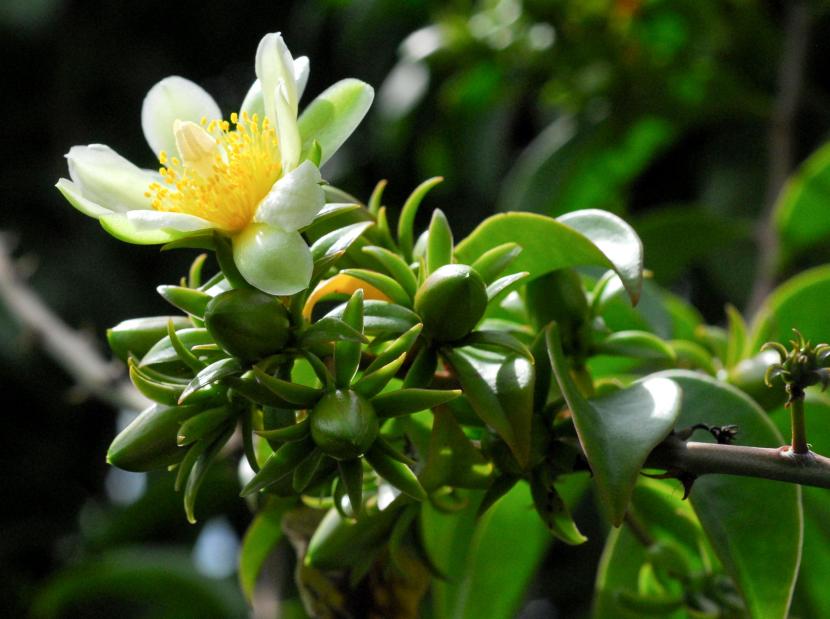
¿How to care for a cactus? It is often thought that they are very resistant to drought plants, which can go without water for weeks, but the reality is different. A couple of years ago a man, who had been growing cacti for years, told me something that stuck in my memory, which was: if cacti didn't need so much water, they would be seen more in gardens where rainfall is very scarce. That day one of the most important myths was demolished.
It is true that they are plants that live in arid regions, but They feed on the monsoon rains, which by the way the producer of cacti told me that they were some of the most nutritious in the world. So how do you take care of them?
Well, they are very grateful plants, but ... you have to water them 🙂. The frequency will vary depending on the season you are in, the substrate it has, and also the age of the cactus itself. However, to have a more or less general idea, we can say that ...:
- Irrigation: we will water about 2 times a week in summer, decreasing to 1 every seven or ten days the rest of the year. In winter, whenever the temperature drops below 0ºC, irrigation will be suspended until spring returns. The water that we give it is convenient that it be of good quality, that is, rain, but in the event that we do not have a way to get it, it can be watered without problems with mineral water or from the tap. But, yes, if you have a water with a lot of lime, fill a bucket and leave it overnight so that heavy metals, such as lime, are deposited inside it.
- Fertilizer: it is highly recommended. For it to have an excellent growth and development, it must be fertilized using a specific fertilizer for succulents. If you prefer to opt for natural fertilizers, you can use guano or liquid humus following the manufacturer's recommendations, or horse manure.
- Substratum: they need a land with good drainage, as they fear waterlogging. A good mix would be: 60% black peat + 30% perlite + 10% river sand. If you live in a very rainy area, add more pearlite; On the other hand, if you have a dry or very dry climate, add a little peat.
- Exhibition: as they are sun-loving plants, they must be placed in a place where they receive the king star directly. In the case that they come from the greenhouse, it is preferable to place them in semi-shade (where they have more light than shade), and gradually expose them more to the sun.
And what if I live in a very cold area? Do not worry.
Cacti as houseplants

Now that we know what they are like and what care they require, let's talk about the hardiness of these plants. Well usually they are very cold. Taking this into account, it is convenient to have them as a houseplant in those regions where the winter climate is cold.
Cacti are ideal to decorate any room, such as the entrance to the home or the living room. Nevertheless, it is important that they are placed in a very bright room, away from drafts (both cold and warm). It is highly advisable to put them near a window, but you have to turn it from time to time so that it receives the same amount of sunlight in all parts of the plant.
You can also have it in your bedroom, but I have to tell you something: cacti do not absorb electromagnetic radiation from the computer… Not all. In fact, to really serve us for this purpose we would have to put it right between the monitor and us, since the waves travel in a straight line. And, of course, who would put a plant covering the screen? It is not feasible, since also the radiation from other parts of the computer would continue to reach us.
So they are still better as "decorative plants."
The best cacti to have in a pot
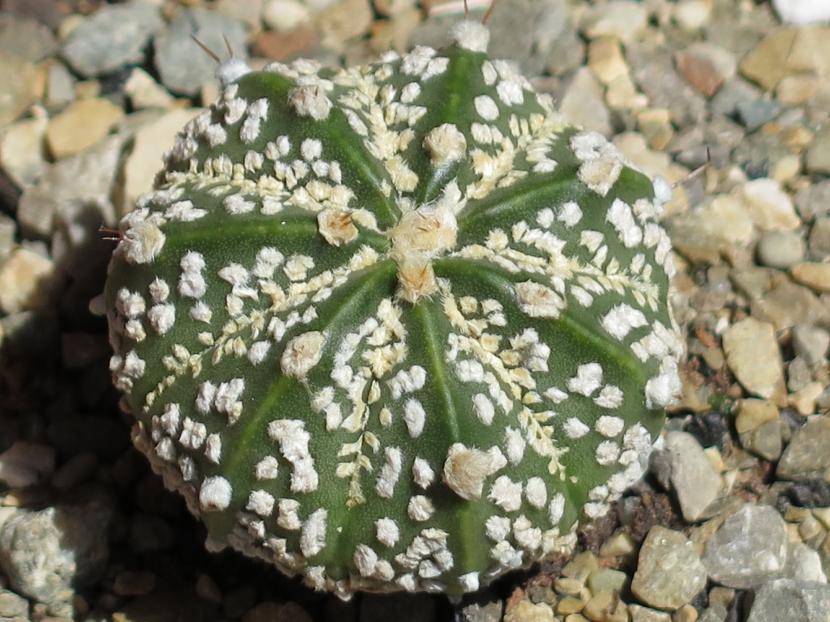
There are many cacti that dazzle us with their beauty, although most reach dimensions that make the plant not very suitable for potting. But I have good news to give you: there are some who do stay small throughout their lives. And are next:
- Astrophytum asterias: the smallest of the Astrophytum is an exceptional cactus.
- Coryphanta: as the C. palmeri or the CompactThey are plants of singular beauty.
- Echinocereus: this genus is made up of small columnar plants. The most interesting species are the E. pectinatus and E.stramineus. In addition, they resist light frosts very well down to 2 degrees below zero.
- echinopsis: the flowers of this genus are spectacular. Enjoy the E. oxygona or the E. aurea.
- lobivia: as L. calorubra o L. winteriana, they have flowers that will make you fall in love.
- Mammillaria: What about the most extensive genus of cacti? Virtually all species can be potted, but we highlight the M. feathery and M. carmenae. They resist morning frost reasonably well, but they have to have a dry substrate so they don't rot.
- Rebutia: the flowers of these plants have always attracted a lot of attention. It is very difficult to say which one is the best for a pot as they all are, but we are left with R. arenacea and R. krainziana.
We hope this special has been useful and interesting for you. Do not hesitate to leave your comment if you have questions or if you have any suggestions.
Cactus flower
The cactus flowers are very beautiful, with cheerful and very decorative colors such as red, pink, white or yellow. But, depending on its shape, we can distinguish three types:
Grandes
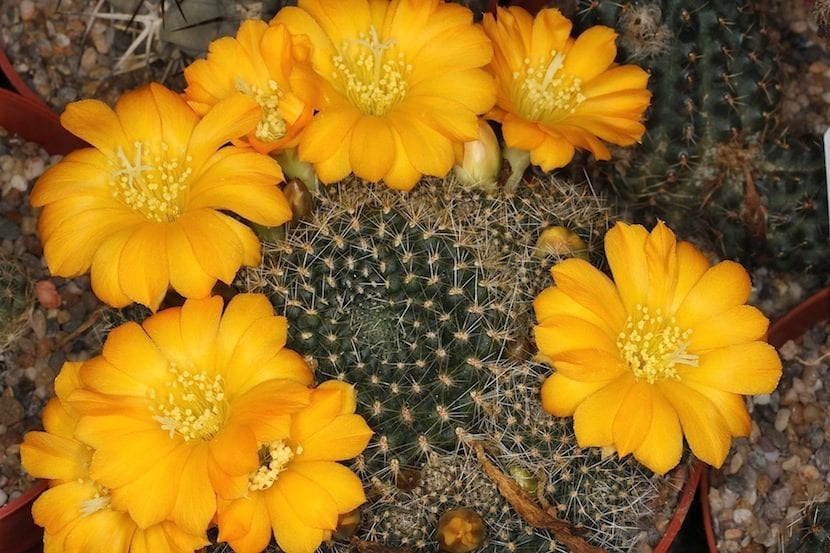
They are the most characteristic flowers of cacti, and some of the most spectacular. The genera Rebutia, Lobivia or Echinopsis are the ones that produce the most showy. They can measure up to 4cm in diameter.
Little

There are some cacti, such as the Mammillaria, that produce very tiny flowers that barely separate a little from the mother plant. They measure less than 1 centimeter, but its ornamental value is very, very high.
Tubular

Like those of the Cleistocactus or the Oreocereus for example. These types of flowers are kept closed, only the stamens and pistil emerge a little outside. They are the ones that attract the least attention, but they are very curious. And it is that when living in areas where at night the temperature drops to close to 0 degrees, and even more, if they want to multiply they need the most sensitive parts of the flower to be protected as much as possible.
How to make a cactus bloom?
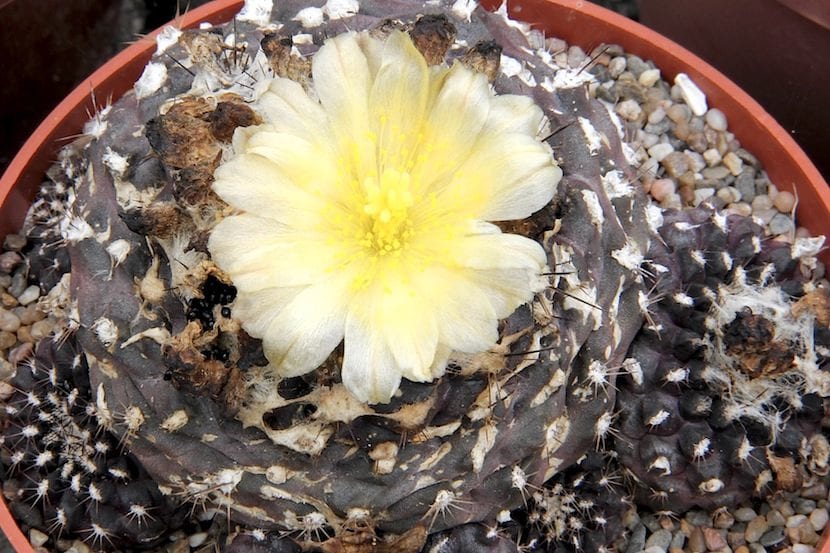
Do you have a cactus and you can't get it to give you flowers? Then try our tips:
- Transplant it to a larger pot: If you have never done it, you should plant your cactus in a pot about 2-3 cm wider than the previous one so that it can continue to grow and, also, so that it can flower. Use a substrate with good drainage, such as black peat mixed with perlite in equal parts, and it will be sure to do well.
- Put it in a brighter area: these plants do not live well in semi-shade, much less in shade. If you have it indoors, place it in a room with plenty of natural light; and if you have it outside, gradually and gradually expose it to sunlight.
- Pay it in spring and summer: in addition to receiving one or two weekly irrigations in summer and another every 15-20 days the rest of the year, it is important that you fertilize it with a specific fertilizer for cacti following the instructions specified on the package.
And if you still can't get it to flower, it might be a species that needs time to produce flowers.
How long does it take for a cactus to bloom?
It depends on the genus and the species, but to give you an idea, the columnar ones can take more than 10 years, while the globular ones can start to do it after 3-4 years.

How much information about cactus
Hello, my name is Agustina and she is very good, I recommend her to people who want to learn about plants such as cactus
Terrific
Very good article, thank you. I have small cacti that they gave me (they are still young), and with some the growth has been a little more difficult ... I will see how it goes with these tips.
We are glad you like it 🙂.
Very good article. I would like to know what species of cactus is in photo n ° 5… I know it is an echinopsis but I don't know which one.
Thank you!
Hi Rosana.
It is an Echinopsis candicans.
Greetings 🙂.
Thank you very much!… It was hard for me to know what type of cactus it was… thank you!
Greetings to you 🙂.
EXCELLENT INFORMATION THANK YOU!
Thanks to you, Fidel 🙂
besides being healthy, ornamentally excellent and they give color and a different aspect to the interior of the house. Excellent in the center of the room.
Hello, my name is Narcisa Calderón, I am from Ecuador because of the perfect tropical part for planting cacti. Well, in my home I have a very beautiful cactus and this one because when it blooms it only does it once and only at night, the next day its flower wakes up dead. I have looked for information about this cactus but I hardly find it and its flower because I only find information about a commonly called The Lady of the Night. but this is not cactus. I am really interested in knowing more about this cactus and much more about its flower, such as what components it carries all of it. and Like a Lady of the Night her fragrance is splendid. I hope answers Thank you.
Hello Narcisa Lilibeth.
Is it possible that you have a Selenicereus grandiflorus? Here in Spain it is known as queen of the night.
Regards!